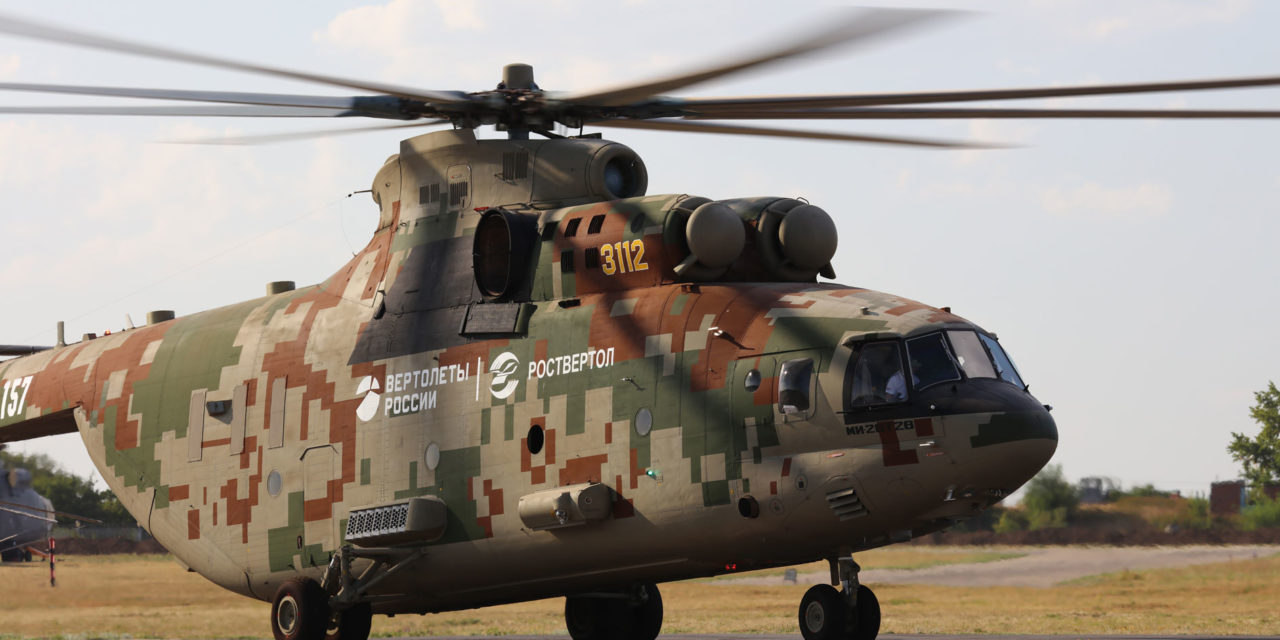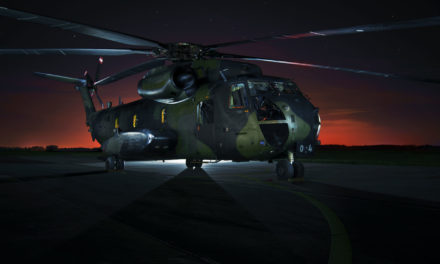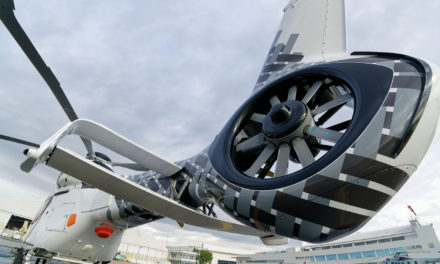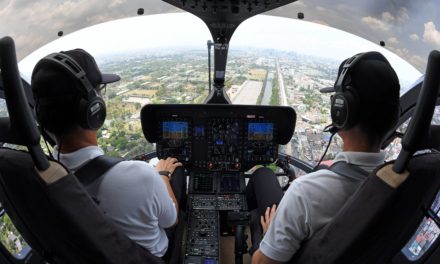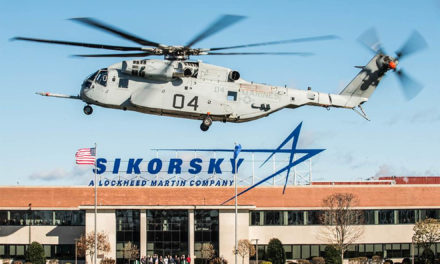Half a century after the first flight of the Mi-26 Russian Helicopters is engaging in a program to launch the production of an improved version of the aircraft. If the needs expressed today by the Russian armed forces are quite similar to those that presided over the birth of this giant helicopter in the 1970s, the machine under development claims significant technical upgrades.
On 19th August 2018, the Russian industrial group Rostec, the parent company of Russian Helicopters, announced the first flight of a prototype helicopter. Not a new concept aircraft, but the modernized version of the giant Mi-26 helicopter that, at the time of its initial design, had made an impact in the rotary wing world.
In the late 1970s, the Mil Design Office (whose name comes from Mikhail Leontievitch, chief engineer) objective was to replace the Mi-6 and Mi-10 and, in doing so, build an aircraft with comparable dimensions, but able to carry a load of more than 20 tons (almost twice as much as the Mi-6) over a distance of between 800 and 1,200 km.
The market for such an aircraft was, of course, essentially military: transport of troops and equipment, field support missions, and more. Over time and through the needs expressed by the military authorities, more than ten different versions of the aircraft were built, including the Mi-26T (1983), Mi-26A (1985), Mi-26S (1986), Mi-26T 26TZ (1986) Mi-26PP (1986), Mi-27 (1986), Mi-26MS (1992), Mid-26TP (1994), Mid-26TS (1995), Mi-26PK (1997), Mi-26T2 (2011).
The construction of these machines, sold in 30 countries, has never been interrupted since the early 1980s and a civilian version was developed in 1983.
More than fifty years after its first flight, in 1977, the Mi-26 is now the subject of a new version called Mi-26T2V to answer to a request from the Defense Department.
Avionics as a game changer
Rather than developing long and costly studies that a brand new program would require, the Russian manufacturer thought it would be better to build on existing certified machine and equip it with more performant instrumentation and flight control systems. In order to meet the requirements of the Russian Ministry of Defense, the new aircraft will also be equipped with the latest generation of defenses.
“It’s about maximizing its survivability in operation,” says Andreï Boginsky, managing director of Russian Helicopters. The Mi-26T2V will maintain the extraordinary performance of the Mi-26, which already in 1982 totaled fourteen world records, the most spectacular of which is the carrying of an internal load of 25 tons at an altitude of 4,100 meters. In addition, to meet the demand of the Russian Ministry of Defense, it will have a modernized avionics allowing it to fly in all weather, day and night, even in hostile airspace.
At the heart of the Mi-26 transformation is the the NPK90-2V avionics suite. It consists of on-board digital computers, latest-generation flight and navigation instrumentation, weather radar, navigation and landing aids, an inertial navigation system , a transponder, a digital control suite, a flight data collection device and multifunction colorized screens. The Mi-26T2V’s avionics enables continuous flight, autopilot cruise flight, acquisition of destination point signals and landing approaches, as well returning to the aerodrome of departure or to a diversion destination.
Performance yet to be established
The first public appearance of the Mi-26T2V, in August 2018, took place during the Russian Army 2018 Armament show. The prototype has been flown to the airshow and displayed on the static area. “The Mi-26 is a unique machine. No other standard aircraft in the world can lift such a weight. Its modernization greatly expands its range of operations. The State Armament Program 2018-2027 plans to equip the armed forces. I am convinced that the Mi-26T2V will be a very popular machine, both in Russia and abroad. We are expecting demand from Asia, Africa and the Middle East, “says Anatoly Serdyukov, industrial director of the aviation division of Rostec State Corporation.
The flight tests began in Moscow shortly after the 2018 Army show. Then, the aircraft will be handed over to the army for official tests.
“The success of the first flights shows that the technical solutions used to upgrade the Mi-26T2V are the right ones. We have significantly reduced the workload of the crew by automating the flight and landing of such a large and complex machine, “commented Andrey Boginsky.
The test program of the Mi-26T2V, powered by two Ivchenko D-136 turbines of 12,200 hp, will allow to check soon the expected performances. The manufacturer also indicates that according to “the request of the Ministry of Defense” the configuration of a crew of four (two pilots, a navigator and a flight engineer), identical to that of the original Mi-26, will be maintained.
By François Blanc
©Russian Helicopter

